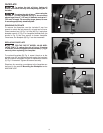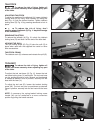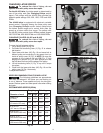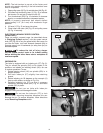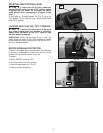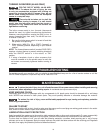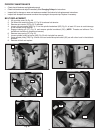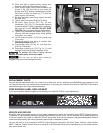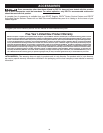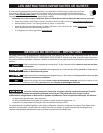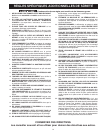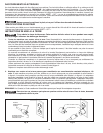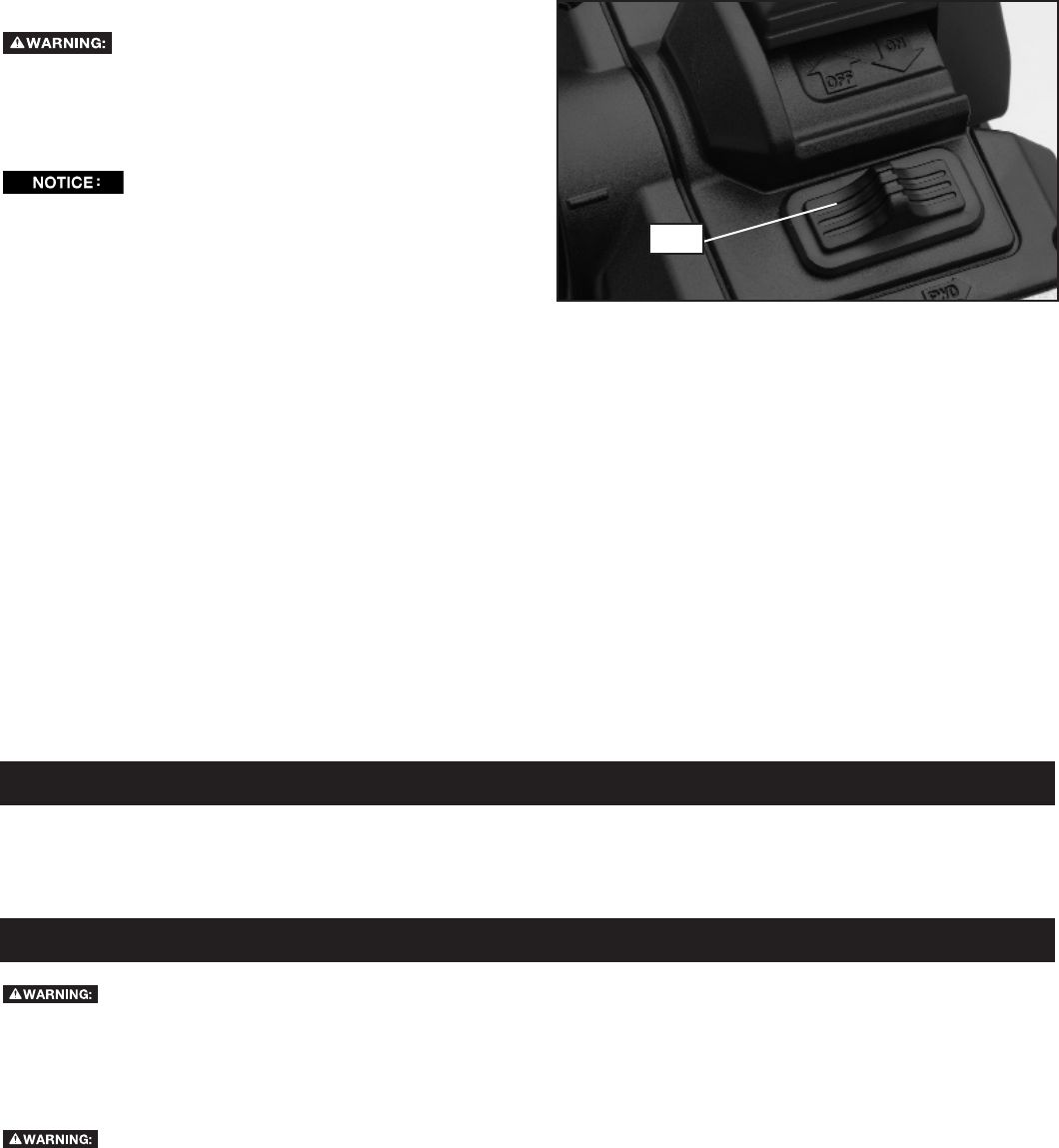
15
MM
Fig. 28
TROUBLESHOOTING
For assistance with your machine, visit our website at www.DeltaMachinery.com for a list of service centers or call the
DELTA
®
Power Equipment Corporation help line at 1-800-223-7278
MAINTENANCE
To reduce the risk of injury, turn unit off and disconnect it from power source before installing and removing
accessories, before adjusting or when making repairs. An accidental start-up can cause injury.
KEEP MACHINE CLEAN
Periodically blow out all air passages with dry compressed air. All plastic parts should be cleaned with a soft damp
cloth. NEVER use solvents to clean plastic parts. They could possibly dissolve or otherwise damage the material.
To reduce the risk of injury, wear certied safety equipment for eye, hearing and respiratory protection
while using compressed air.
FAILURE TO START
Should your machine fail to start, check to make sure the prongs on the cord plug are making good contact in the outlet.
Also, check for blown fuses or open circuit breakers in the line.
LUBRICATION & RUST PROTECTION
Apply household oor paste wax to the machine table, extension table or other work surface weekly. Or use a commercially
available protective product designed for this purpose. Follow the manufacturer’s instructions for use and safety.
To clean cast iron tables of rust, you will need the following materials: a medium sized scouring pad, a can of spray
lubricant and a can of degreaser. Apply the spray lubricant and polish the table surface with the scouring pad. Degrease
the table, then apply the protective product as described above.
TURNING IN REVERSE (46-460 ONLY)
FOR THE DELTA
®
MODEL 46-460 MIDI-
LATHE ONLY: To reduce the risk of injury, be sure
to only use accessories equipped with locking set
screws for turning the lathe in reverse. Also, do not
switch lathe turning directions until the workpiece
comes to a complete stop.
Care should be taken not to stall the
workpiece when turning in reverse. If a stall should
occur, stop the lathe and verify that the chuck or
faceplate is fully seated and both set screws are
tight before continuing.
The lathe comes ready to turn forward (downwards
toward the user) for typical woodturning applications.
However, some applications require the lathe to turn in
reverse (upwards away from user). The 46-460 can turn
in reverse. To do this:
1. Be sure the lathe power switch is turned off and that
the spindle is not spinning.
2. Slide switch (MM) Fig. 28 to “FWD” (forward) or
“REV” (reverse) position, depending on your desired
rotation.
NOTE: The forward/reverse switch (marked FWD/ REV)
employs a lockout feature to prevent switching directions
when the ON/OFF switch is in the raised, or "ON"
position.
3. If using a faceplate, chuck or other accessory that
must be screwed on to the spindle nose, be sure the
set screws are securely tightened before running in
reverse.




